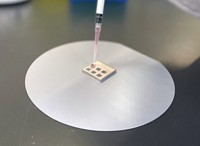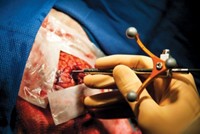Advertisement
Grab your lab coat. Let's get started
Welcome!
Welcome!
Create an account below to get 6 C&EN articles per month, receive newsletters and more - all free.
It seems this is your first time logging in online. Please enter the following information to continue.
As an ACS member you automatically get access to this site. All we need is few more details to create your reading experience.
Not you? Sign in with a different account.
Not you? Sign in with a different account.
ERROR 1
ERROR 1
ERROR 2
ERROR 2
ERROR 2
ERROR 2
ERROR 2
Password and Confirm password must match.
If you have an ACS member number, please enter it here so we can link this account to your membership. (optional)
ERROR 2
ACS values your privacy. By submitting your information, you are gaining access to C&EN and subscribing to our weekly newsletter. We use the information you provide to make your reading experience better, and we will never sell your data to third party members.
Analytical Chemistry
Squishy Cancer Cells
Atomic force microscopy pinpoints cancer cells by their softness
by Celia Henry Arnaud
December 6, 2007

Atomic force microscopy (AFM) can be used to distinguish metastatic cancer cells from normal cells on the basis of stiffness rather than shape, according to a new report from researchers at the University of California, Los Angeles. The cancer cells are significantly squishier than the normal cells, and the method promises to improve cancer diagnostics.
Chemistry professor James K. Gimzewski, pathology professor Jianyu Rao, and coworkers use AFM to measure the stiffness of cells in fluids taken from the body cavities of patients with suspected metastatic lung, breast, or pancreatic cancer (Nat. Nanotechnol., DOI: 10.1038/nnano.2007.388). Any cancer cells found in these fluid samples will be metastatic because they have escaped the primary tumor. The researchers find that metastatic cancer cells are nearly four times softer than normal cells.
"These results, which show extreme softness of metastatic cancer cells from patients, are an important addition to a rapidly growing literature on the distinctiveness of elasticity of cells and matrix in both health and disease," says Dennis E. Discher, a professor of molecular and cell biophysics at the University of Pennsylvania who studies mechanical properties of cells.
Cancer cells are usually identified by their shape and by antibody staining. The problem with using such methods with cells in fluid samples is that benign mesothelial cells that line body cavities often have enlarged nuclei and rounded shapes similar to those of cancer cells.
It takes years to develop the skill to distinguish normal from cancer cells by looking at their morphology and analyzing results from staining, Gimzewski says. "We are using a quantitative test that is not dependent on having a person trained as a pathologist." Rao and Gimzewski's team identified cancer cells that had been incorrectly identified as normal on the basis of their morphology.
Although the team has not yet studied primary tumor cells, Rao expects that primary tumor cells that are destined to spread to other parts of the body will prove to be softer than ones that will stay put. He hopes that the AFM measurements, therefore, will help pathologists predict which patients need to be treated more aggressively. Currently, pathologists can't reliably predict which patients will develop metastatic cancer.
More work is needed to prove that these measurements benefit patients, but Rao anticipates a day when all pathology labs will use such technology. Because the AFM instrument is mounted on an inverted optical microscope, Gimzewski notes, fluorescence measurements and AFM measurements could be done on the same instrument. "If we can demonstrate the test provides diagnostic information critical for patient care, I don't think it will be difficult to convince people to set this system up in the hospital setting," Rao says.




Join the conversation
Contact the reporter
Submit a Letter to the Editor for publication
Engage with us on Twitter